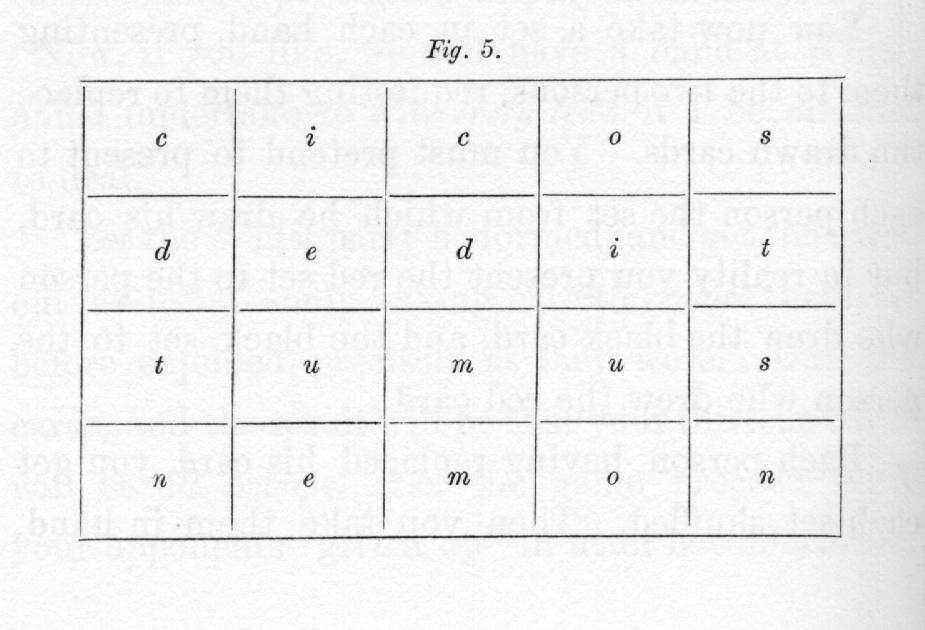| The gaming table : its votaries and victims, in all times and countries,
especially in England and in France. Vol. 2 | ||
6. Twenty cards being arranged upon a table, a person thinks of two, and you undertake to guess them.
Lay out twenty cards of any kind, two by two,

Fig. 5.
— — — — — — — — — — -
| c | i | c | o | s |
— — — — — — — — — — -
| d | e | d | i | t |
— — — — — — — — — — -
| t | u | m | u | s |
— — — — — — — — — — -
| n | e | m | o | n |
— — — — — — — — — — -
409
All the letters of the words being thus covered, ask the party who has thought of the cards to tell you in which lines these cards are. If both are in the first line (cicos), they must be those on the two c's; if they are both in the second line, they cover the d's in dedit; both in the third line, they cover the u's in tumus; both in the fourth, they cover the n's in nemon.
If one be in the first line and the other in the
410
| The gaming table : its votaries and victims, in all times and countries,
especially in England and in France. Vol. 2 | ||